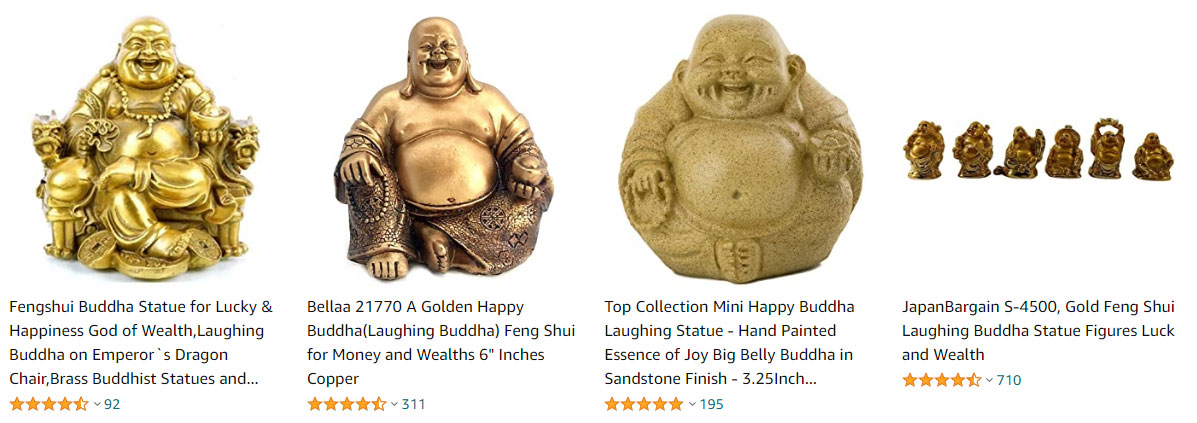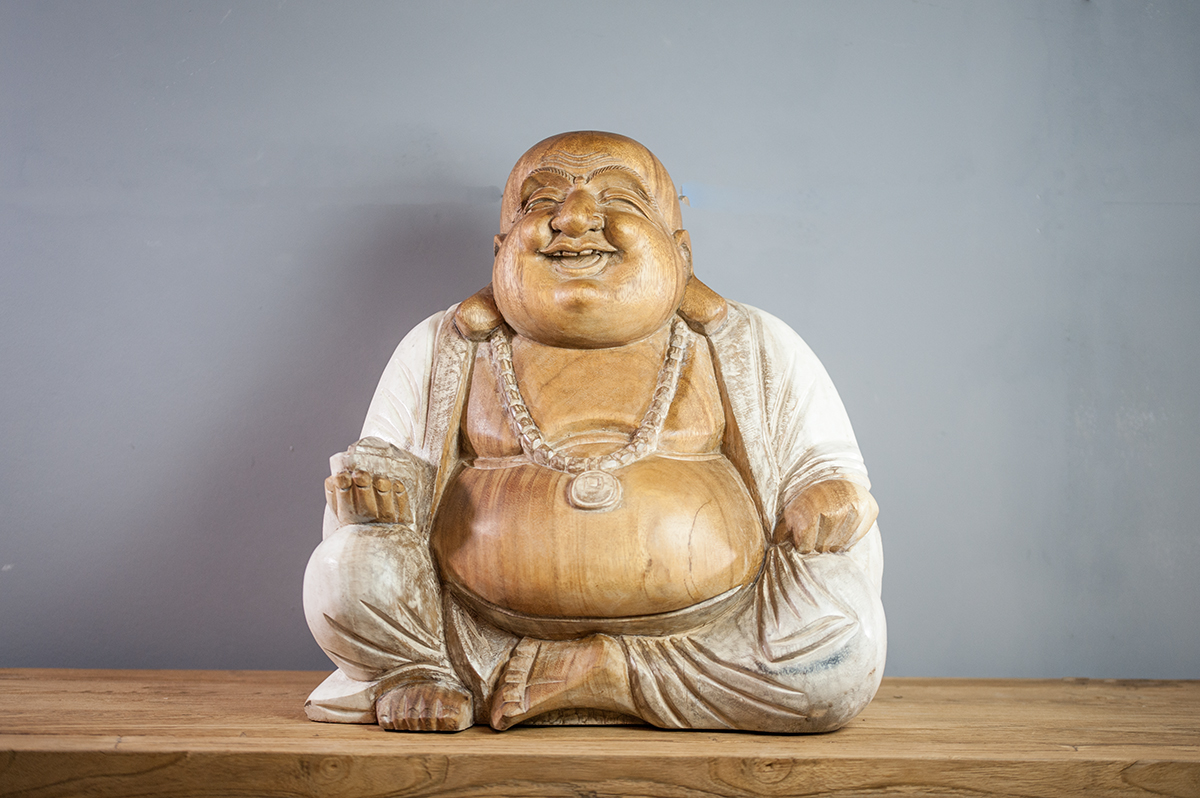Laughing buddha meaning
The laughing Buddha brings luck, contentment and abundance into everyone's life. It depicts the fullness of what one wishes for, whether it is wealth, happiness or satisfaction.
It is true that everyone wants to attract luck and fortune, especially when it comes to their own home. A home is a place where you live, where you create memories, so you always want that place to be full of happiness and positive energy. According to the Hindu culture, Vastu Vidya is the best way to make our home happy and full of positivity. While in other cultures it is known as Feng shui. This name will probably speak to you more.
In China, people usually keep a statue of the Laughing Buddha at home to increase wealth and attract positive energies around them. They consider the Laughing Buddha as an idol that protects them and doubles the benefits of the positive vibrations in the house.
The Laughing Buddha is generally recognized as a bald laughing man whose pot-shaped stomach is openly exposed. This celestial Buddha is also known as Hotei or Pu-Tai.
In this article we will therefore explain the different meanings of the Laughing Buddha, his different types, his location in the house, and other things that it may be helpful to know once you have brought the Buddha home.
Appearance of the Laughing Buddha
As we have said, the laughing Buddha is usually depicted as a bald, laughing man with a coarse, openly exposed belly.
It is said that his appearance comes from a Zen Buddhist monk who lived over 1000 years ago. His prominent belly and cheerful smile earned him this name.
However, as a symbol of Feng Shui, the Laughing Buddha has great importance in our lives. Most of us firmly believe that keeping him in a particular direction fulfills distinct desires. It is therefore important to know in which direction it should be held and what type of Buddha it should be used by individuals.
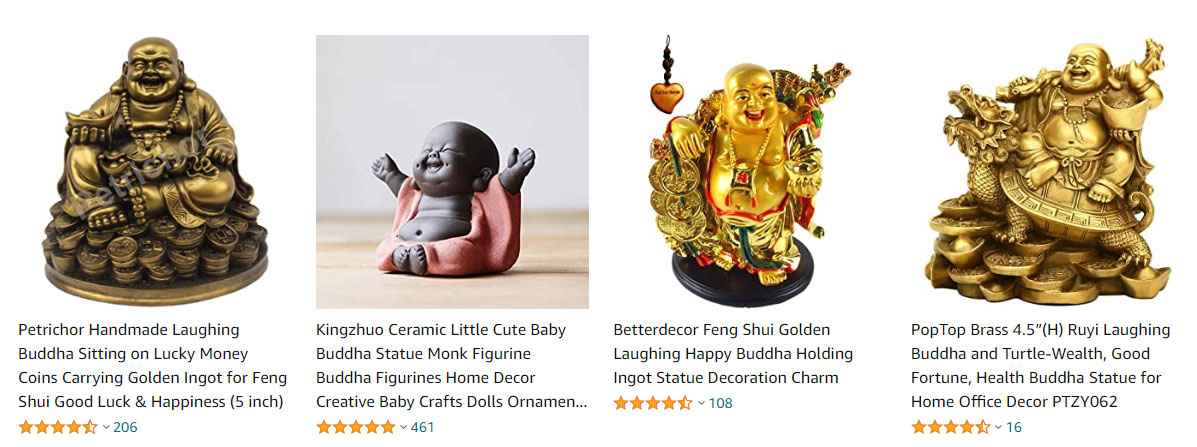
Meaning of the Laughing Buddha
As we have seen above, the Laughing Buddha is a symbol of luck, fortune, positivity and prosperity. It is essentially part of Feng Shui, based on the ancient Buddhist monks who lived in China around the 10th century. These monks were eccentric, but the Laughing Buddha was considered a very loving, caring and humble monk. That is why most people in China keep him in their house, car, or office to bring laughter and joy into their lives.
These statues are also called: the Merry, the Hotelier or the Traveling Buddha. They come in different forms, including those represented carrying certain objects such as a pot of gold or a bag full of treasures. Although it is normal for people to buy the Laughing Buddha in India, there are certain rules and regulations in China because it is believed that one should not selfishly buy the symbol of wealth. If you keep it only for the lure of gain, it will affect you negatively.
The different types of Laughing Buddha
Laughing Buddha playing with children (usually five in number) : It symbolizes good fortune from heaven. It also brings good fortune and positive energies.
Buddha laughing with a bowl : The bowl represents the life of a monk. It is associated with the renunciation of material goods and access to enlightenment.
Buddha laughing with a fan : It symbolizes happiness and joy. It is said that waving the fan represents the banishment of trouble.
Buddha laughing with a sack or bag : The Buddha's carrying bag symbolizes the traveler. According to one version, it means that he collects people's sadness and misfortunes and puts them in his bag. Another version is that the bag symbolizes wealth and good fortune.
Buddha laughing with beads or balls : The one who wears beads is considered to be a monk representing the practice of meditation. Pearls also symbolize the "pearls of wisdom". While the ball is considered a ball of wealth and prosperity.
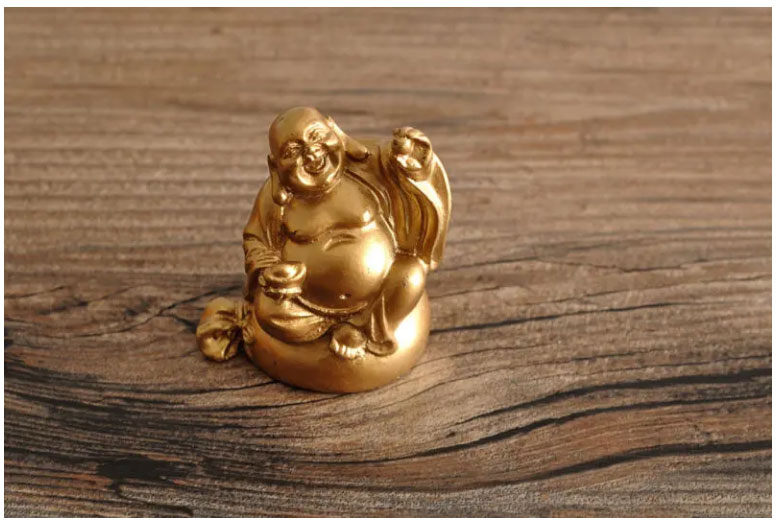
Meaning of the different postures of the Laughing Buddha
• The sitting posture of the Buddha is considered to be the posture of love and it symbolizes the balance of thoughts and tranquility.
• The standing Buddha symbolizes wealth and happiness.
• The Buddha sitting on a large gold nugget and ready to give a smaller gold nugget is a symbol of luck.
• The Buddha with his fan-shaped hat on his head represents joy and good fortune.
• The Buddha holding a block of gold with his hands in an upright position represents abundance of wealth and good fortune.
• The Buddha with the fan in one hand and the gourd in the other brings blessings and good health.
• The Buddha carrying a golden bag on his back symbolizes prosperity.
• The Buddha carrying a bag of blessings on the right shoulder and a fan on the left protects during long journeys.
The Buddha who laughs at home
You can find the Laughing Buddha in a wide variety of Feng Shui products, ranging from statues and bells, to key chains and jewelry. If you wish to use a Laughing Buddha statue in your home, where and how do you place it? What materials should you use: metal, resin or wood? Does it matter?
The Laughing Buddha symbol is considered to bring auspicious energy, wealth and joyful blessings wherever it is placed. So now you know why you can usually see at least one Laughing Buddha in Chinese restaurants, for example.
Laughing Buddha Statue for Feng Shui
First of all, you need to decide on the best materials and colors for your decor. You can find Feng Shui statues in a variety of materials, from resin to metal, rock crystal and even porcelain, and the Laughing Buddha statues and figurines are no exception.
Attract and strengthen the energy of Feng Shui
Want to attract more energy and wealth? Then look for a laughing Buddha statue with gold bars and place it in the monetary area of your house. Are you focused on radiant health? Choose a laughing Buddha with a Wu Lou in his hand and place the statue in the Feng shui zone related to your health.
Placement and direction of the Laughing Buddha
It is necessary to place a statue of Buddha at home to bring contentment and serenity. Buddha's birthday falls on May 8 and it is a good omen that a candle is lit on his birthday. It is said that it fulfills desires.
Placement of the Buddha in the East Sector, or in a direction where he could be seen by all family members when they are sitting in the living room or the main hall, is considered to resolve disputes between family members.
If the Buddha statue is placed facing the direction of his Sheng Chi, it is said to bring wealth, help personal development, well-being and victory. It helps to achieve one's goals.
The Laughing Buddha exposed in the southeast direction of the main hall, dining room or bedroom of the house brings exceptional luck and increased income to the family.
Placing the Buddha in his office helps to keep a clear mind, reduce tension and eliminate the effect of potential enemies. In addition, keeping the Buddha on his desk increases luck and fulfills aspirations.
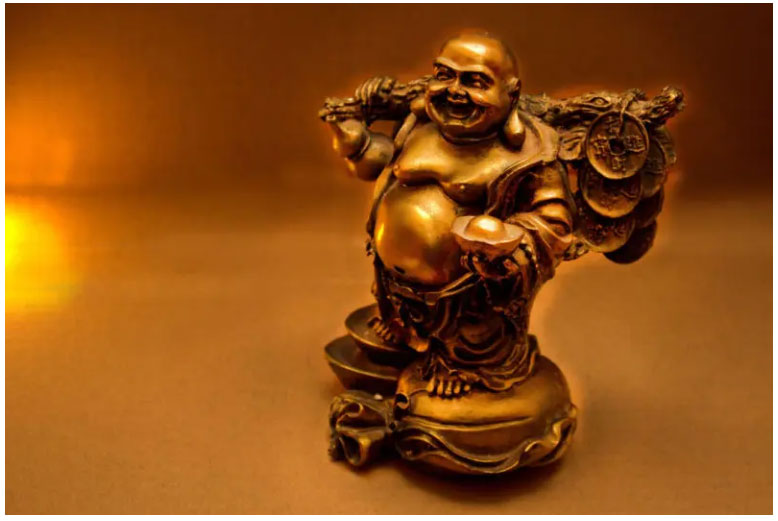
Precautions to be taken to keep the Buddha who laughs
The Laughing Buddha is revered in Buddhism and Feng Shui and should therefore be treated with respect. It should not be placed in the kitchen, bathroom or on the floor.
• It must be placed at a height at least equal to eye level.
• It must not be placed near electrical equipment and engine parts.
• It must not be placed on a television set.
If it is not possible to place the Buddha statue facing the main door, it should be placed on a side or corner table facing the main door. And you, do you already have your laughing Buddha in your house or apartment?
